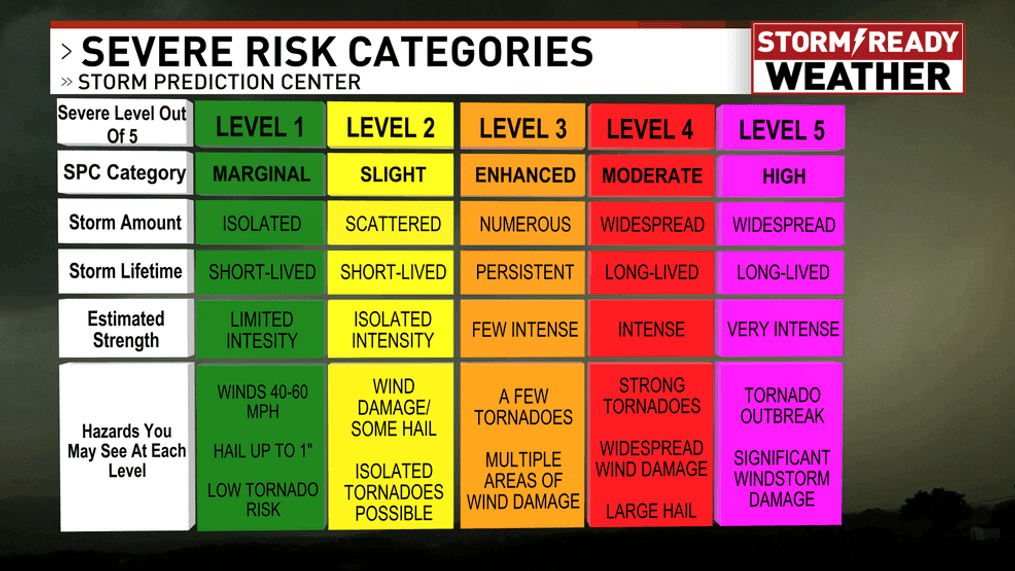Could A Flesh-Eating Fungus Become A Global Pandemic Due To Climate Change?

Table of Contents
The Threat of Opportunistic Fungi
Increased Prevalence of Invasive Fungal Infections
The number of serious fungal infections globally is rising at an alarming rate. Opportunistic fungi, which typically only cause disease in immunocompromised individuals, are becoming increasingly prevalent and virulent. This trend is particularly concerning in healthcare settings, where hospital-acquired infections are a significant source of morbidity and mortality.
- Examples of opportunistic fungi: Candida species (causing candidiasis), Aspergillus species (causing aspergillosis), and Cryptococcus species (causing cryptococcosis) are among the most common culprits.
- Increased hospital-acquired infections: Overcrowded hospitals and the overuse of antibiotics contribute to the rise of these infections.
- Impact on mortality rates: Invasive fungal infections have high mortality rates, particularly in individuals with weakened immune systems due to HIV/AIDS, cancer, or organ transplantation. These opportunistic fungi thrive in weakened hosts.
Climate Change and Fungal Virulence
Rising global temperatures, increased humidity, and more frequent extreme weather events are creating ideal conditions for fungal growth and expansion. This means that climate change is not only increasing the prevalence of existing fungal infections but also enhancing the virulence of these pathogens. This creates a significant threat for the immunocompromised as well as the wider population.
- Specific examples: Certain fungi, such as Coccidioides, thrive in warmer, drier climates, and their geographical range is expanding due to climate change. This is causing an increase in coccidioidomycosis cases.
- Geographical expansion of fungal habitats: As temperatures rise and weather patterns shift, fungi are colonizing new areas, increasing exposure for humans and animals alike.
- Impact on agricultural yields: Climate change also impacts agricultural yields by increasing fungal diseases in crops, leading to food shortages and potentially increasing malnutrition, which in turn weakens immune systems, increasing vulnerability to fungal infections.
The Case of Ophiocordyceps and Other Potentially Pandemic Fungi
Understanding Ophiocordyceps and its potential
Ophiocordyceps is a genus of fungi known for infecting insects, controlling their behavior, and ultimately killing them. While most Ophiocordyceps species target insects, the possibility of zoonotic transfer – transmission to humans – raises significant concerns. While currently unlikely, this cannot be ruled out entirely. Further research into this fungal group is crucial.
- Specific examples: Ophiocordyceps unilateralis is famous for its manipulation of ant behavior. Other species target various insects.
- Discussions of cross-species transmission: Although rare, instances of fungi crossing species barriers have been documented. The possibility of an Ophiocordyceps species adapting to infect humans, though currently hypothetical, necessitates ongoing surveillance.
- Research gaps regarding human transmission potential: Much research remains to be done to fully understand the potential for zoonotic transfer in Ophiocordyceps and other potentially pandemic fungi.
Other Emerging Fungal Threats
Beyond Ophiocordyceps, other fungi pose significant threats, exacerbated by climate change. The increasing prevalence of antifungal resistance is a major concern, making treatment more challenging.
- Examples of other fungi: Candida auris, a highly drug-resistant fungus, is a growing concern in healthcare settings globally.
- Prevalence in specific regions: Certain fungi are more prevalent in specific regions, creating localized outbreaks that could escalate into larger pandemics with climate change altering their habitats and spread.
- Factors increasing their threat level: Antibiotic overuse, weakened immune systems, and environmental changes all contribute to the increased risk of fungal outbreaks.
Mitigation and Prevention Strategies
Public Health Measures
Improving sanitation, hygiene practices, and early detection of fungal infections are crucial in mitigating the risk of a pandemic. Strong public health measures are essential.
- Strategies for preventing the spread: Implementing strict infection control protocols in healthcare settings and improving sanitation in communities can significantly reduce transmission rates.
- Public awareness campaigns: Educating the public about fungal infections and preventative measures is vital.
- Investment in research and development: Increased investment in fungal diagnostics, antifungal drug development, and vaccine research is crucial for preparedness.
Addressing Climate Change
Addressing climate change is arguably the most critical step in reducing the risk of a fungal pandemic. Climate action is not merely an environmental imperative; it's a public health necessity.
- Reducing greenhouse gas emissions: Transitioning to cleaner energy sources and adopting sustainable practices are essential to curb global warming.
- Sustainable agricultural practices: Implementing sustainable agricultural methods can reduce the impact of climate change on fungal growth and crop yields.
- International collaborations: Global cooperation is essential to address the climate crisis effectively and collectively mitigate the risk of fungal pandemics.
Conclusion
The threat of opportunistic fungi, the pandemic potential of specific fungi like Ophiocordyceps, and the accelerating impact of climate change paint a concerning picture. The link between climate change and the increased risk of fungal pandemics cannot be overstated. The rise in invasive fungal infections, enhanced fungal virulence, and the emergence of drug-resistant strains demand urgent attention. We must prioritize public health measures, invest in research, and, most critically, aggressively address climate change to prevent a catastrophic flesh-eating fungus pandemic. The potential for a flesh-eating fungus pandemic fueled by climate change demands urgent attention. By understanding the risks and supporting research and climate action, we can protect ourselves and future generations. Let's work together to prevent a future where flesh-eating fungus outbreaks become a grim reality.

Featured Posts
-
 Robert Downey Jr S Role In Jamie Foxxs All Star Weekend A Controversial Choice
May 26, 2025
Robert Downey Jr S Role In Jamie Foxxs All Star Weekend A Controversial Choice
May 26, 2025 -
 Uefa Dan Arda Gueler Ve Real Madrid E Bueyuek Suerpriz Sorusturma Basladi
May 26, 2025
Uefa Dan Arda Gueler Ve Real Madrid E Bueyuek Suerpriz Sorusturma Basladi
May 26, 2025 -
 Kembalinya Moto Gp Ke Brasil Sirkuit Ayrton Senna Goiania Menyambut Musim Baru
May 26, 2025
Kembalinya Moto Gp Ke Brasil Sirkuit Ayrton Senna Goiania Menyambut Musim Baru
May 26, 2025 -
 Day 5 Of Severe Weather Awareness Week Focus On Flood Safety
May 26, 2025
Day 5 Of Severe Weather Awareness Week Focus On Flood Safety
May 26, 2025 -
 Tour Of Flanders 2024 Pogacars Unmatched Solo Ride To Victory
May 26, 2025
Tour Of Flanders 2024 Pogacars Unmatched Solo Ride To Victory
May 26, 2025
Latest Posts
-
 Bernard Kerik A Life In Law Enforcement Death At 69
May 31, 2025
Bernard Kerik A Life In Law Enforcement Death At 69
May 31, 2025 -
 Death Of Bernard Kerik Remembering The 9 11 Nypd Commissioner
May 31, 2025
Death Of Bernard Kerik Remembering The 9 11 Nypd Commissioner
May 31, 2025 -
 Banksy Bonanza Six Screenprints Handmade Tool And A Happy Ending
May 31, 2025
Banksy Bonanza Six Screenprints Handmade Tool And A Happy Ending
May 31, 2025 -
 Former Nyc Police Commissioner Bernard Kerik Passes Away At 69
May 31, 2025
Former Nyc Police Commissioner Bernard Kerik Passes Away At 69
May 31, 2025 -
 Bernard Keriks Legacy From Nypd Commissioner To Prison
May 31, 2025
Bernard Keriks Legacy From Nypd Commissioner To Prison
May 31, 2025
